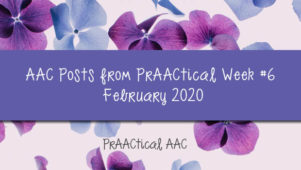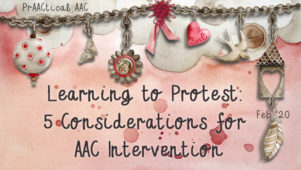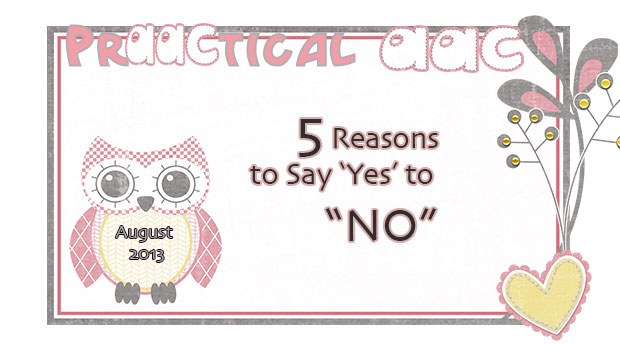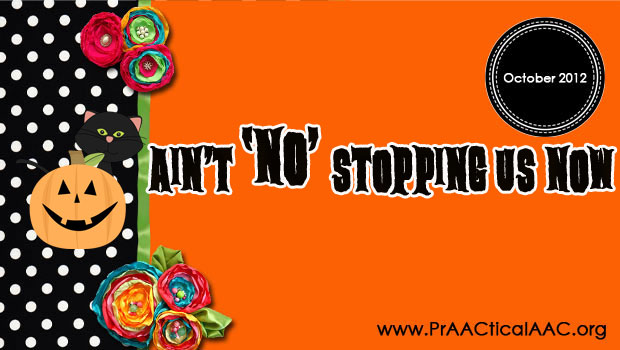Throwback Thursday: Ain’t No Stopping Us Now
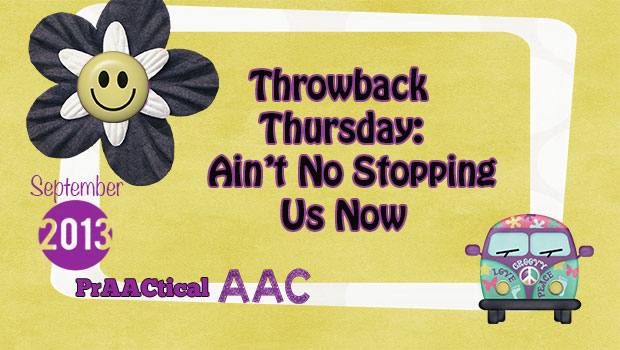
(updated/original version published on October 20, 2012)
Sometimes saying ‘no’ to the demands of the day actually helps us rejuvenate and allows us to be more productive. Saying ‘no to false information helps us to advocate for ourselves. The ‘no’ topic seems to be trending now. There have been quite a few blog posts and comments about the issue (Just Say No, How and When to Give Your Students A Break). We are so glad that this topic is getting more focus. Of course everyone agrees that ALL people have the right to say ‘no’. But it is not always so simple. There are many types of ‘no’. There is the outright ‘no’, the ‘no’ to more work, the ‘no’ for disagreement, the ultra important ‘NO’ to unwanted touching, and many more. And depending upon how you say ‘no’ is the difference between it being accepted or… NOT.
The issue of saying ‘no’ gets more complicated when people use AAC systems. And even more complicated than that when communication and language difficulties come into play. We often notice that challenging behavior has to be used before adults honor a ‘no’. AAC users may have difficulty saying ‘no’ in a conventional polite way such as with a ‘no thanks’ or saying ‘no’ through convincing us ‘no’ with a complicated sentence like ‘come on, I really don’t want to go because I am tired and hungry and I go somewhere everyday after school, couldn’t I skip this one time?’
Realizing that saying ‘no’ or protesting is a skill just like requesting or commenting, we like to teach it with specific communication opportunities and teaching strategies.
‘NO’ PrAACtice Opportunities
PrAACtice saying ‘no’ before the learner gets upset, take the item away immediately. Offer a more preferred item for a short time. Then go back to offering undesired items and prAACticing until student is using the “no” independently. Then expand so student is saying “no thanks”, “no, want another one”, “no too hard”, etc.
- Offer undesired toys
- Offer undesired books
- Provide a worksheet with 100 difficult problems
- Get unusually close to a child who does not like that (just be careful here)
- Offer 3 choices of food you know the child does not like
- Start to go into an overcrowded room
- Offer an undesired computer program
- Offer inappropriate jacket for the weather (if the student cares)
- Provide incorrect information about the student (can go from name, to likes, to dislikes, etc)
- Begin to pack a bag with the wrong items
- “No Thanks”
- “Give me 5 minutes to rest”
- “Please No”
- “Don’t Do That”
- “Not Now”
- “I need some space” (thanks @m2thefizzle for this example)
- “No, Need A Better Choice”
- “Leave Me Alone”
- “Stop”
- “No Way Jose”
Teaching Strategies
- Aided Language Input- Model with AAC system (no tech, low tech, high tech) all the different types of ‘no’ in authentic language experiences
- Use Think Aloud Strategy- ‘Think aloud’ about how you don’t like an offered choice, so you will say “no” or “no way Jose”. You can ‘think aloud’ about how people listen when you say “no” politely (“no thanks”).
- Begin with a most to least teaching hierarchy (introduce the undesired situation, but immediately access the ‘no’ words on the AAC system, until learner understands that you will accept ‘no’, the break, or even change information based on their ‘no’
- To teach a more linguistically complex ‘no’, use expansions or add a word strategy
- Use unexpected opportunities- notice the ‘pre-no behaviors (possibly some agitation, rushed movements/sounds, waning attention, yawning, etc.) and instead of asking do you need a break, use aided language input to model, “no more”, “give me a break”, etc.
- Use social stories explaining appropriate ‘no’s”, breaks, and other types of ‘no’
- Read books about saying ‘no’
Teaching ‘no’ in appropriate ways will help foster great self advocates! Who knows where it will lead…
Please let us know your goals for teaching ‘no’ to AAC users. You can add them to our goal bank at:
Editable document on Google Drive: http://bit.ly/UNldrE
PDF for printing on Dropbox: http://bit.ly/UNkWEV
Filed under: PrAACtical Thinking
Tagged With: protesting
This post was written by Robin Parker


